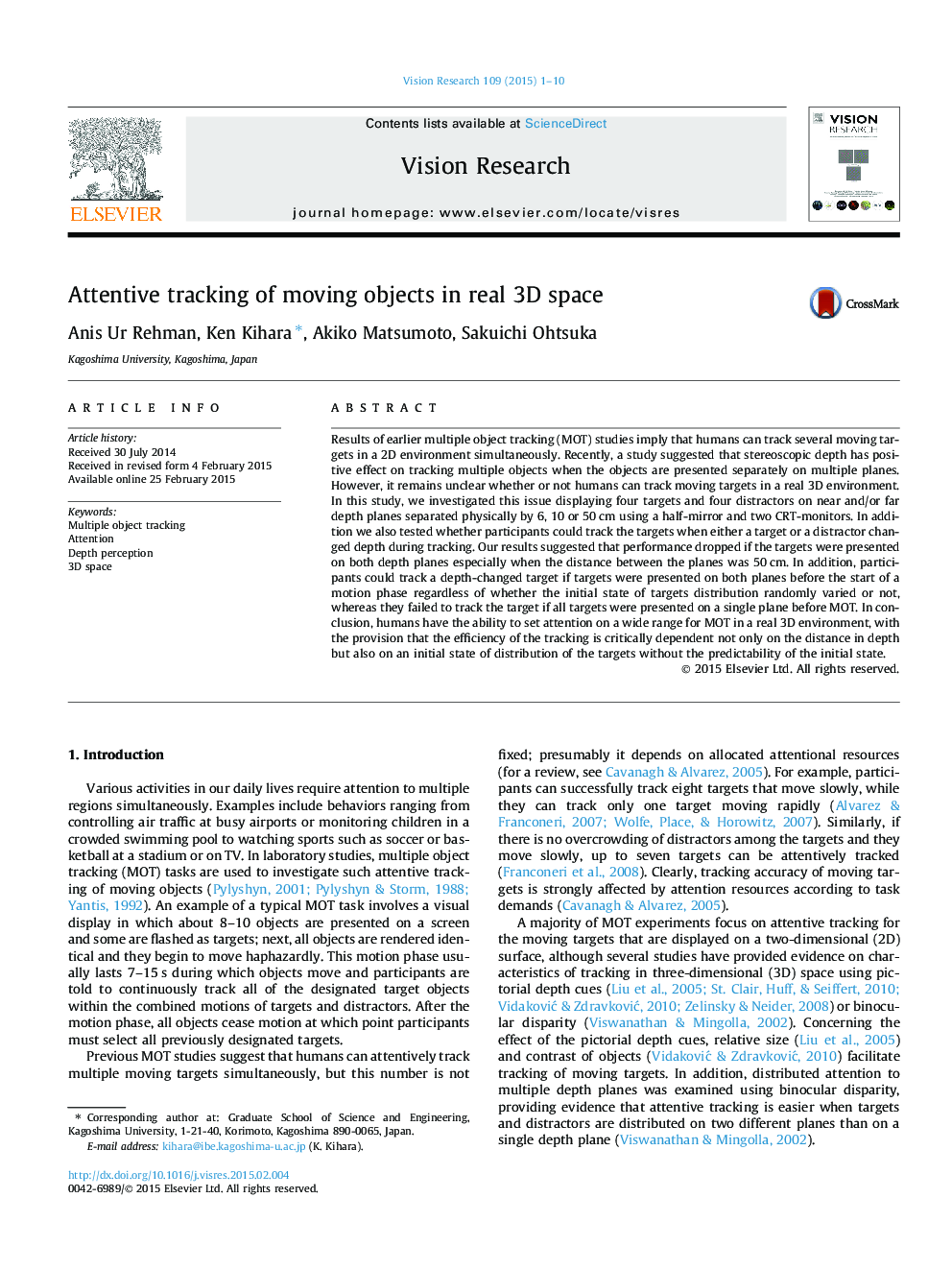| Article ID | Journal | Published Year | Pages | File Type |
|---|---|---|---|---|
| 6203238 | Vision Research | 2015 | 10 Pages |
â¢Observers can attend a target's plane and ignore distractor's plane during tracking.â¢Increasing distance between two planes deteriorates tracking performance.â¢Attention can be set to two planes based on objects distribution at the beginning.â¢Attention cannot be extended from single plane to dual ones during tracking.â¢Predictability of objects distribution does not affect the attentional set.
Results of earlier multiple object tracking (MOT) studies imply that humans can track several moving targets in a 2D environment simultaneously. Recently, a study suggested that stereoscopic depth has positive effect on tracking multiple objects when the objects are presented separately on multiple planes. However, it remains unclear whether or not humans can track moving targets in a real 3D environment. In this study, we investigated this issue displaying four targets and four distractors on near and/or far depth planes separated physically by 6, 10 or 50Â cm using a half-mirror and two CRT-monitors. In addition we also tested whether participants could track the targets when either a target or a distractor changed depth during tracking. Our results suggested that performance dropped if the targets were presented on both depth planes especially when the distance between the planes was 50Â cm. In addition, participants could track a depth-changed target if targets were presented on both planes before the start of a motion phase regardless of whether the initial state of targets distribution randomly varied or not, whereas they failed to track the target if all targets were presented on a single plane before MOT. In conclusion, humans have the ability to set attention on a wide range for MOT in a real 3D environment, with the provision that the efficiency of the tracking is critically dependent not only on the distance in depth but also on an initial state of distribution of the targets without the predictability of the initial state.
